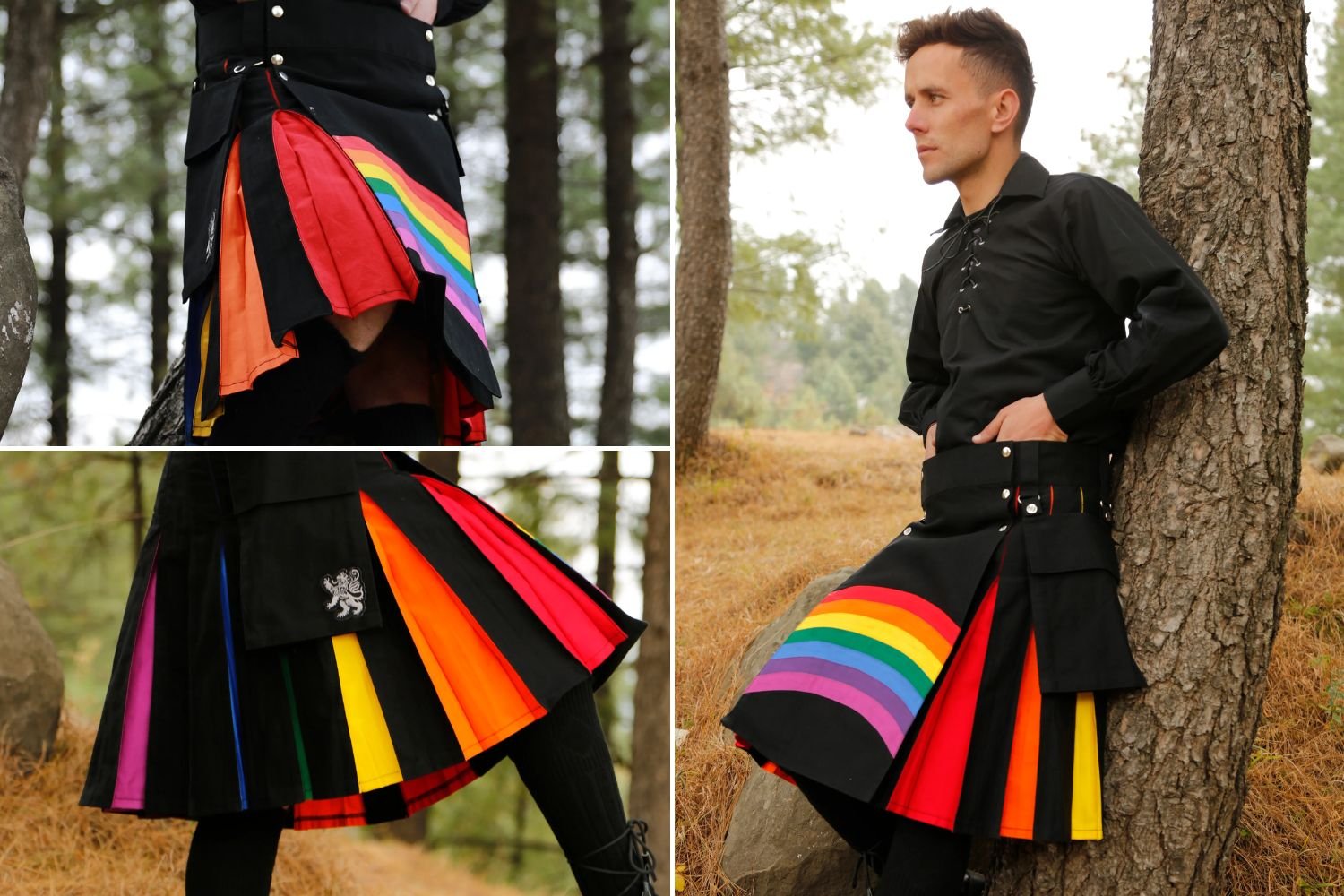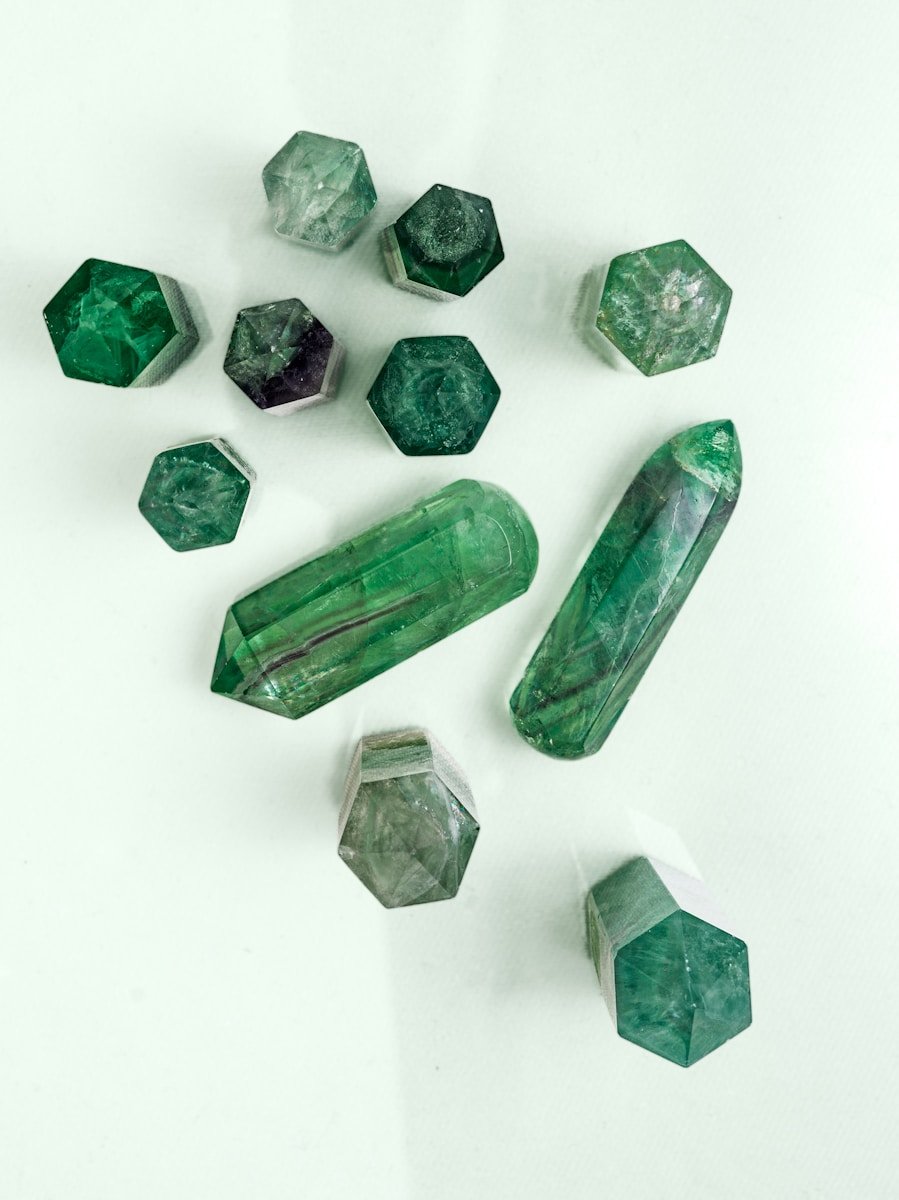In the kaleidoscope of fashion, where trends come and go, there emerges a vibrant phenomenon that not only captures the eye but also embodies a powerful message of acceptance and inclusivity. Enter rainbow kilt, a colorful twist on a traditional Scottish garment that is revolutionizing the fashion world. Beyond mere attire, rainbow kilts symbolize a celebration of diversity, a bold statement of solidarity with the LGBTQ+ community, and a redefinition of fashion norms. As we delve into the world of rainbow kilts, we uncover not just a garment, but a movement—a movement that embraces individuality, challenges stereotypes, and promotes a more inclusive society. Join us on a journey to unveil the vibrant world of rainbow kilts and discover how they are reshaping the fashion landscape one pleat at a time.
History and Origins of Kilts
Contents
- 1 History and Origins of Kilts
- 2 Emergence of Rainbow Kilts
- 3 Design and Patterns
- 4 Fashion Revolution
- 5 Cultural Significance
- 6 Versatility and Comfort
- 7 Celebrities and Influencers
- 8 Supporting LGBTQ+ Causes
- 9 Challenges and Criticisms
- 10 Fashion Kilt, Elevating Men’s Style with Modern Kilts
- 11 Global Adoption
- 12 Future Outlook
- 13 Conclusion
- 14 Unique FAQs
The history and origins of kilts trace back to the Scottish Highlands in the 16th century. Initially, kilts were a practical garment for Gaelic-speaking Highlanders, providing warmth and freedom of movement in the rugged terrain. These early kilts were made from wool and featured simple tartan patterns, primarily serving as everyday attire for men. Over time, kilts evolved both in design and significance, becoming deeply intertwined with Scottish culture and identity. As the centuries passed, kilts transitioned from being purely functional to symbolic. They became associated with clan allegiance, with each clan having its distinct tartan pattern. This symbolism strengthened during the Jacobite uprisings of the 18th century, as kilts became a visual representation of Scottish pride and resistance against English rule. Despite efforts to suppress Highland culture following the defeat of the Jacobites, kilts endured as a symbol of Scottish heritage. In the 19th century, kilts underwent a revival thanks to the efforts of Scottish elites and romantic writers who sought to preserve traditional Highland culture. Queen Victoria’s enthusiasm for Scotland further popularized kilts, as she dressed her sons in Highland attire, sparking a trend among the British aristocracy. This renewed interest in kilts led to the establishment of standardized tartan patterns and the formalization of Highland dress codes.
Emergence of Rainbow Kilts
The emergence of rainbow kilts represents a departure from traditional tartan patterns and a celebration of diversity and inclusivity. While traditional kilts are steeped in history and symbolism, rainbow kilts offer a contemporary twist, embracing a spectrum of colors inspired by the LGBTQ+ pride flag. This vibrant reinterpretation of the classic garment challenges conventional notions of masculinity and femininity, inviting individuals of all genders and sexual orientations to express themselves freely. The adoption of rainbow kilts reflects a broader cultural shift towards acceptance and equality. In recent decades, the LGBTQ+ rights movement has made significant strides towards achieving equal rights and recognition. Rainbow kilts serve as a visible symbol of support for this movement, signaling solidarity with LGBTQ+ communities and advocating for diversity and inclusivity in all aspects of life.
Design and Patterns
What sets rainbow kilts apart is their vibrant and diverse color combinations, which offer a striking contrast to the traditional tartan patterns. From bold primary colors to softer pastel shades, rainbow kilts allow individuals to express their unique identities and affiliations. Additionally, many manufacturers and designers offer customization services, enabling customers to create bespoke designs that reflect their personal style and preferences. The design process for rainbow kilts involves careful consideration of color theory and symbolism. Each hue carries its own significance, representing concepts such as love, courage, and pride. By combining different colors and patterns, designers can create visually stunning kilts that convey powerful messages and evoke strong emotions. Whether worn at pride events, festivals, or everyday occasions, rainbow kilts serve as a tangible expression of individuality and solidarity.
Fashion Revolution
Rainbow kilts are not just garments; they are symbols of empowerment and self-expression. In recent years, they have gained popularity among fashion-forward individuals who seek to challenge traditional gender norms and celebrate diversity. Designers, celebrities, and influencers alike have embraced rainbow kilts as a means of making a bold fashion statement and advocating for social change. The rise of rainbow kilts has coincided with a broader shift towards gender-neutral fashion and inclusive representation in the media. Designers are increasingly blurring the lines between masculine and feminine aesthetics, offering clothing options that cater to a diverse range of body types and identities. As a result, rainbow kilts have become a staple of runway shows, red carpet events, and high-profile photo shoots, further cementing their status as a symbol of progress and liberation.
Cultural Significance
Beyond their fashion appeal, rainbow kilts hold significant cultural symbolism, particularly within the LGBTQ+ community. They are often worn at pride events, parades, and celebrations as a visible sign of solidarity and support. For many individuals, wearing a rainbow kilt is a deeply personal and empowering experience, representing acceptance, resilience, and pride in one’s identity. The cultural significance of rainbow kilts extends beyond the LGBTQ+ community, encompassing broader themes of diversity and inclusion. In Scotland and beyond, rainbow kilts have become emblematic of a more tolerant and accepting society, where individuals are free to express themselves without fear of discrimination or prejudice. By embracing diversity in all its forms, rainbow kilts help foster a sense of unity and belonging among people of different backgrounds and identities.
Versatility and Comfort
One of the key advantages of rainbow kilts is their versatility, making them suitable for a wide range of occasions and settings. Whether worn casually or formally, rainbow kilts make a bold style statement and command attention wherever they go. Their eye-catching colors and dynamic patterns add a touch of flair to any outfit, elevating even the most mundane of ensembles. In addition to their visual appeal, rainbow kilts are also prized for their comfort and practicality. Made from high-quality fabrics such as wool or cotton, rainbow kilts offer superior comfort and breathability, making them ideal for all-day wear. The pleated design provides ample freedom of movement, allowing wearers to move with ease and confidence. Whether attending a pride parade, music festival, or wedding ceremony, rainbow kilts ensure both style and comfort are never compromised.
Celebrities and Influencers
Celebrities and influencers play a significant role in shaping fashion trends and influencing consumer behavior. With their massive online followings and global reach, they have the power to amplify messages of inclusivity and acceptance. Many celebrities have embraced rainbow kilts as a means of showing support for the LGBTQ+ community and raising awareness about important social issues. From Hollywood actors to pop singers, celebrities from all walks of life have been spotted wearing rainbow kilts at red carpet events, music festivals, and public appearances. Their bold fashion choices not only garner attention but also spark conversations about diversity, representation, and equality. By using their platform to promote acceptance and tolerance, these celebrities help pave the way for a more inclusive and compassionate society.
Supporting LGBTQ+ Causes
In addition to raising awareness through their fashion choices, rainbow kilts also support LGBTQ+ causes through charitable initiatives and fundraising efforts. Many manufacturers and retailers donate a portion of their proceeds to LGBTQ+ charities and organizations, providing vital resources and support to those in need. These donations help fund initiatives such as advocacy, education, healthcare, and community outreach, making a tangible difference in the lives of LGBTQ+ individuals and their allies. By purchasing rainbow kilts, consumers not only express their support for LGBTQ+ rights but also contribute to meaningful social change. Every rainbow kilt sold represents a step towards a more inclusive and equitable society, where everyone is free to live authentically and without fear of discrimination. Through their activism and philanthropy, rainbow kilt manufacturers and retailers are helping to build a brighter and more hopeful future for LGBTQ+ people around the world.
Challenges and Criticisms
Despite their growing popularity and cultural significance, rainbow kilts still face challenges and criticisms from some quarters. Traditionalists may view them as a departure from Scottish tradition, arguing that kilts should adhere to traditional tartan patterns and designs. Others may perpetuate stereotypes about masculinity and femininity, suggesting that rainbow kilts are only suitable for certain genders or sexual orientations. However, proponents of rainbow kilts argue that these criticisms are misguided and outdated. They contend that kilts have always been a dynamic and evolving garment, adapting to changing social norms and cultural practices over time. Rainbow kilts are simply the latest iteration of this long-standing tradition, reflecting the values and aspirations of contemporary society.
Fashion Kilt, Elevating Men’s Style with Modern Kilts
Fashion Kilt, a premier destination for kilt enthusiasts, offers an extensive selection of contemporary kilts tailored specifically for men. From traditional tartan kilts to fashion-forward leather iterations, Fashion Kilt’s inventory boasts a wide range of materials, patterns, and styles curated to elevate any wardrobe. Whether you’re seeking a timeless Scottish aesthetic or a bold fashion statement, Fashion Kilt provides customizable options of kilt for men and expert tailoring to ensure a perfect fit and unparalleled comfort. Explore the exceptional craftsmanship and modern appeal of kilts for men at Fashion Kilt, where heritage meets contemporary elegance.
Global Adoption
While rainbow kilts have deep roots in Scottish culture, they have transcended geographical boundaries and gained international appeal. From New York to Tokyo, rainbow kilts are making waves on runways, streets, and social media platforms, symbolizing a global movement towards inclusivity and equality. In cities around the world, pride parades and festivals feature participants wearing rainbow kilts as a symbol of LGBTQ+ pride and solidarity. The global adoption of rainbow kilts highlights the universal appeal of their message and the power of fashion to effect social change. Regardless of nationality, ethnicity, or background, people everywhere are drawn to the vibrant colors and bold designs of rainbow kilts, recognizing them as a symbol of love, acceptance, and unity. As rainbow kilts continue to gain popularity, they serve as a reminder that diversity is something to be celebrated and embraced, not feared or shunned.
Future Outlook
As the fashion landscape continues to evolve, the future looks bright for rainbow kilts. With growing awareness and acceptance of LGBTQ+ rights, rainbow kilts are poised to become even more mainstream. As society becomes more inclusive and diverse, rainbow kilts will play an increasingly prominent role in fashion, culture, and activism. Additionally, there is a growing emphasis on sustainable fashion practices, opening up opportunities for eco-friendly and ethically produced rainbow kilts. Manufacturers and designers are exploring innovative materials and production methods to reduce their environmental impact and promote social responsibility. By prioritizing sustainability and ethical practices, the fashion industry can ensure that rainbow kilts continue to inspire and empower future generations.
Conclusion
In conclusion, rainbow kilts are more than just garments; they are symbols of love, acceptance, and diversity. By embracing vibrant colors and bold designs, rainbow kilts are redefining fashion norms and promoting inclusivity on a global scale. As we look to the future, let us continue to celebrate the beauty and diversity of rainbow kilts, paving the way for a more inclusive and accepting world.
Unique FAQs
1. Are rainbow kilts only worn by members of the LGBTQ+ community?
– Rainbow kilts are worn by individuals of all sexual orientations and gender identities as a symbol of support and solidarity with the LGBTQ+ community. They are embraced by allies as well as members of the LGBTQ+ community.
2. Can I customize my own rainbow kilt design?
– Yes, many manufacturers offer customization services, allowing individuals to create their own unique rainbow kilt designs tailored to their preferences. This customization may include selecting specific colors, patterns, and fabric types.
3. Are rainbow kilts appropriate for formal occasions?
– Yes, rainbow kilts can be worn for formal occasions such as weddings, galas, and award ceremonies. They make a bold fashion statement while still adhering to dress codes, especially when paired with appropriate accessories and attire.
4. Do rainbow kilts come in different lengths and styles?
– Yes, rainbow kilts come in various lengths and styles to suit different preferences and body types. Traditional kilts typically fall to the knee, but contemporary designs may vary in length and silhouette. Additionally, there are options such as utility kilts and hybrid styles that combine elements of traditional and modern kilts.
5. What materials are rainbow kilts made from?
– Rainbow kilts are typically made from high-quality fabrics such as wool, cotton, or polyester. These materials are chosen for their durability, comfort, and ability to hold vibrant colors. Some manufacturers may offer eco-friendly and sustainable options as well, in line with growing consumer demand for ethically produced clothing.












